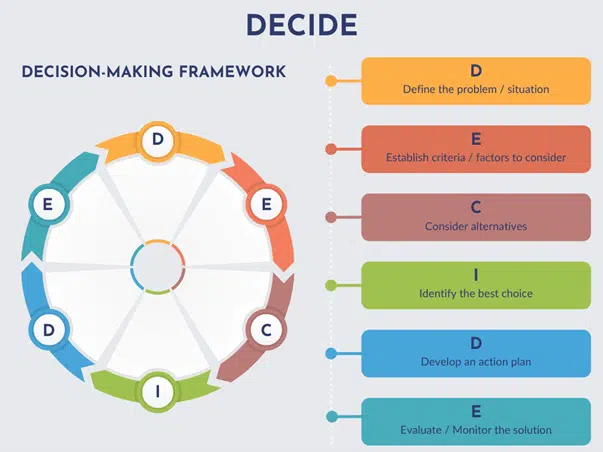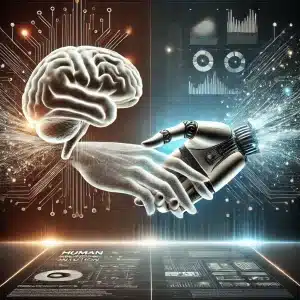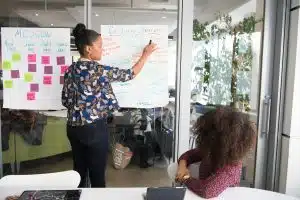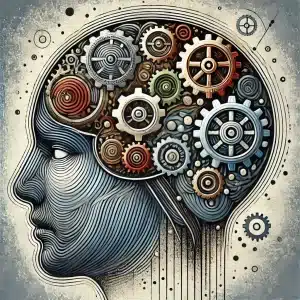Today, I woke up feeling extremely grateful that I am free to choose!
According to the Cambridge dictionary, the word choice means “an act or the possibility of choosing”. Most of us take our ability to make our own decisions for granted. We make thousands of choices daily using mental shortcuts created over the years without even noticing. Decisions can be as simple as our choice of coffee or what we will wear in the morning; and can be as important as what to do when you are in a toxic relationship or how to plan for retirement. A decision can be right or wrong, but most importantly, it represents uncertainty even when we have information available to support it.
So what is decision making?
Decision making is the framework we use to distinguish and choose alternatives that ultimately translate into a choice and eventually into action. It’s very similar to problem-solving and is one skill everyone should have in their toolbox.
A quick overview of the neuroscience of decision making
I’m not a neuroscientist, but I’m passionate about learning how our brain works and its impact on behaviour and cognitive functions. After much research and listening to experts, let me share some of my key takeaways on the neuroscience of decision making.
- Researchers have discovered that several brain structures are involved in the decision-making process. It’s not essential to know the names of these structures; the key is to understand how they behave. One study demonstrated that our brain exhibits different patterns of activity contingent on whether we’re given orders or freely decide how to act. So in effect, our brain reacts differently when we follow orders.
- These brain structures are also involved in the process of decision making and the degree of confidence in that decision.
- Emotions are also a crucial part of decision-making. Research suggests that emotions strongly influence our decisions. You might be familiar with the fight-or-flight response, where when faced with danger, our heartbeat accelerates so we can make the best decision to ensure our safety.
Decision making isn’t easy, considering all the associated biological responses in the background. But rest assured as there are other factors, such as context, beliefs, values, and other mental processes influenced by our experiences and memories. And of course, we also use a more reflective and analytical system that rationally analyses benefits against costs based on the information at our disposal.
System 1 and System 2 thinking
The concepts of “System 1” and “System 2” thinking were made famous by Kahneman in 2011. The first is fast, intuitive, automatic, unconscious, emotional and requires little effort, whilst the second is slower, logical, conscious and requires more effort.
Hollingworth et al. (2011) clarify that “The two systems are not physically tied to any specific area of the brain; … System 1 & 2 are complementary systems that work in tandem to produce more effective and efficient decision-making … Neither system is accurate 100% of the time, both can make mistakes!“.
We use both systems to make decisions, and even when we believe we are being rational in a decision, our “System 1” still drives many of our choices. Understanding and being aware of how the two systems interact in our daily lives will help us to identify the bias in our decisions and how to avoid it. The integration of both systems enables us to make better decisions.
Reasons why we make poor decisions
I believe it’s beneficial to reflect on why we make poor decisions. Here are 4 reasons why:
- Analysis paralysis
An example of analysis paralysis is when we have to decide and overthink it by spending too much time on the different alternatives. The result is stress, anxiety and eventually no decision.
- Information overload
Another common reason for poor decision-making is using too much information to help us decide.
- Overconfidence
One of the reasons why we make poor decisions is overconfidence. We overestimate our ability to make good decisions and fail to recognise that we have limited critical thinking skills.
- The “What the hell” effect
This effect describes the cycle of making a wrong decision, regretting it, but doing it again. One small, poor decision can have a significant impact.
Choice overload, paradox of choice and decision fatigue
Having the freedom to choose can be overwhelming as we are inundated with hundreds of different options to choose from in our daily lives. In the 2011 Ted Talk “How to Make Choosing Easier,” Iyengar talks about choice overload. She says that although we like to have plenty of choices, too many options can lead to greater difficulty making a decision or no decision being achieved.
In his 2004 book “The Paradox of Choice”, Barry Schwartz concluded from his findings that while having more choice might allow us to get better results, it also leads to more indecision, anxiety, paralysis, and dissatisfaction.
Another interesting concept is decision fatigue, where the more choices we make, the harder each decision becomes for our brain. And at some stage, the brain uses shortcuts, deciding impulsively without thinking.
How to make smarter decisions?
Professor Kristina Guo (2008) developed the DECIDE framework to support more effective decision making.
How to apply the DECIDE framework?
Define the problem or situation clearly
Make sure you clearly understand the problem or the situation. Are there other decision-makers, other stakeholders involved in the process? What are their perspectives? These questions will help you define the problem, so gather enough information.
Establish the criteria
Before deciding, create a list with all the requirements and factors you want to consider.
Consider alternatives
Spend time considering the different options available to you but don’t overthink it and be pragmatic.
Identify the best alternative
Weigh the list of criteria and factors you’ve created and score each option. This’ll help add rationality and “System 2” thinking into the process, so you make a balanced decision.
Develop and implement an action plan
Now, you can decide and take the necessary steps to move forward.
Evaluate
Like everything else in life, it’s vital to evaluate and improve your process. Write down the decision and the reasons behind it, the key factors and influences you used and monitor the results to learn and adjust to improve your decision making over time.
This framework is straightforward to apply and use, but it’ll only work if other conditions are in place. Here are extra tips to help sharpen your decision-making skills
- Have a restful night’s sleep: Research has shown that lack of sleep negatively affects decision-making.
- Take time to focus and think logically and clearly. But make decisions quickly and change your mind slowly.
- When making a decision, focus on the return on investment.
- Listen to your inner voice and trust yourself but seek advice if you need it.
- Be honest and aware of potential biases.
- Decisions are rarely made in isolation so consider your environment and those around you.
- Finally, always stay open-minded.
We are all unique individuals, and what works for me might not work for you. So take from this article what resonates with you; get out of your comfort zone and try something you’ve never tried before.
Be self-compassionate. Learn from mistakes and do better next time. You don’t’ need to get it right all the time. Every time you make a decision, you get better at it.
References:
Cambridge Dictionary. Meaning of choice in English. Available at: https://dictionary.cambridge.org/dictionary/english/choice (Accessed: 24 March 2022).
Guo, K (2008). “DECIDE: A Decision-Making Model for More Effective Decision Making by Health Care Managers”. Available at: https://www.researchgate.net/publication/5376683_DECIDE_A_Decision-Making_Model_for_More_Effective_Decision_Making_by_Health_Care_Managers. (Accessed: 20 March 2022).
Hollingworth et al. “System 1 AND SYSTEM 2 THINKING – Debunking Myths and Re-establishing Truths – New Frontiers in Behavioural Science Series – Article 5”. The Marketing Society. Available at: https://www.marketingsociety.com/think-piece/system-1-and-system-2-thinking#_ftn1. (Accessed: 22 March 2022).
Iyengar S. (2011). “How to make choosing easier”. Available at: https://www.ted.com/talks/sheena_iyengar_how_to_make_choosing_easier/transcript?language=en#t-809000. (Accessed: 23 March 2022).
Kahneman, D. (2011). “Thinking, fast and slow”. New York: Farrar, Straus and Giroux.
Schwartz, Barry (2004). “The Paradox of Choice”. New York, United States: Harper Perennial.
Walton M. et al. (2004). “Interactions between decision making and performance monitoring within prefrontal cortex”. Available at: https://www.nature.com/articles/nn1339. (Accessed: 23 March 2022).






